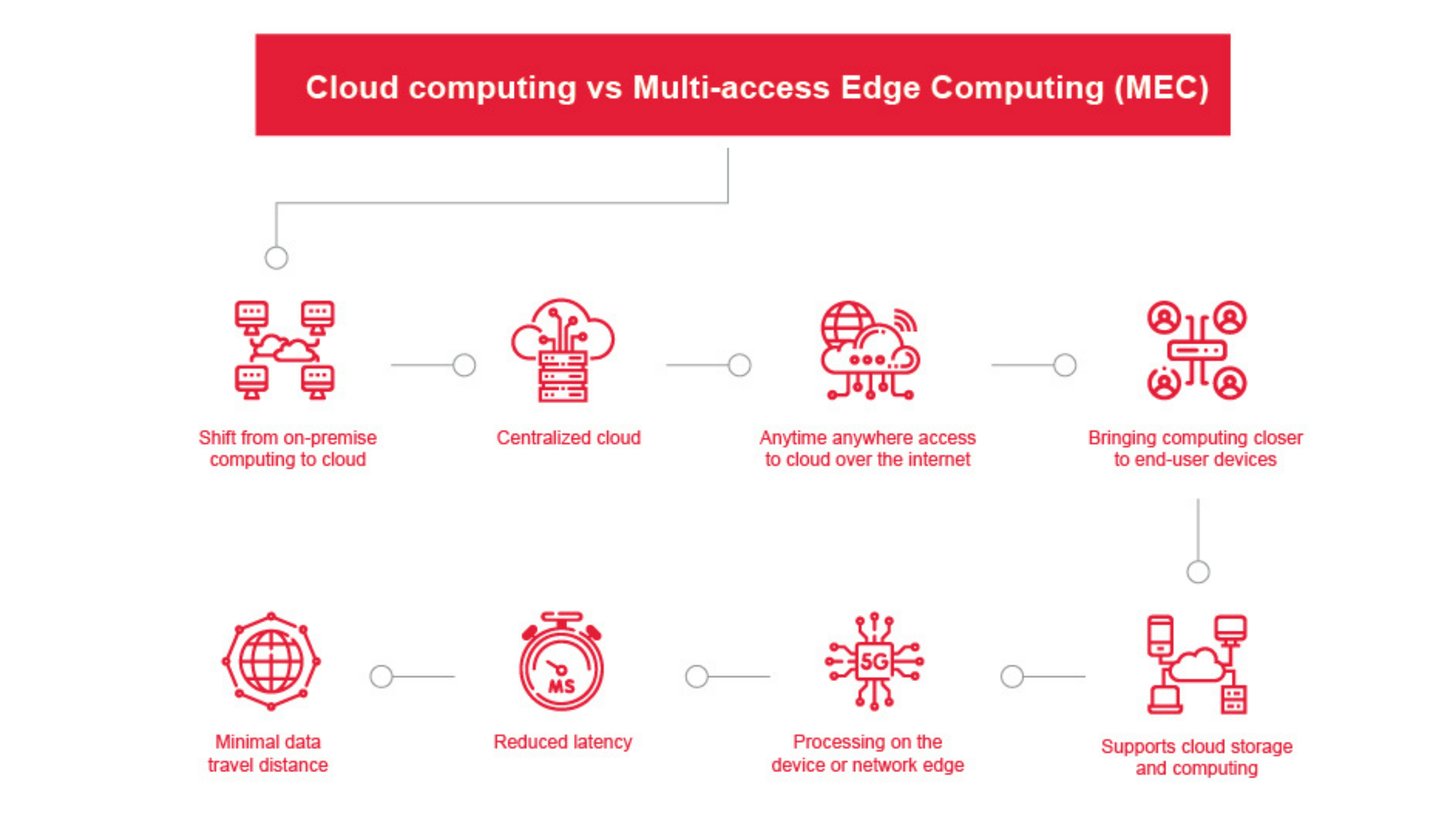Powering Digital Transformation with 5G & Edge

Enterprises are under constant pressure – to stay competitive, increase productivity, optimize OPEX, enhance safety & security and be profitable. That's where they have embarked on Industry 4.0 led Digital transformation journey.
Digital transformation journeys enable organizations to streamline business processes, increase efficiency, and optimize expenditure by adopting the latest technologies. Enterprises across industry verticals are continuously ideating to create connected, intelligent, and future-ready experiences for their stakeholders' ecosystem. For digitization, connectivity issues like reliability, speed, bandwidth, and latency are the most common roadblocks faced by enterprises.
5G wireless network brings high speed, low-latency, reliability, and edge computing power, which enables seamless, smart, connected experiences, new edge use cases like AR/VR, and widespread IoT deployment. The arrival of 5G is all set to transform the enterprise world, accelerate Industry 4.0 digitalization journey and enable much-needed business transformation.
Multi-access Edge Computing (MEC) and its role in 5G
Any conversation involving exciting 5G use cases eventually land up Multi-Access Edge Compute(MEC). Here is an overview of the concept. In a traditional cloud computing model, data is stored in a centralized database; stakeholders must connect to the cloud to access it. While this model has its advantages, a model that combines the power of the cloud with MEC is more suitable when dealing with a humongous volume of latency-sensitive data that needs to be accessed in real-time.
Multi-access edge computing is an ETSI-defined network architecture model positioned at the network edge -cellular and other setups. It creates an IT service environment on the network edge and enables cloud computing capabilities.
Let's take the oil and gas industry, for instance. This Cisco report says that oilfields generate routine data that needs to be transferred within regular intervals, ranging between 1 and 2 terabytes per day. These are data inputs that concern drilling platform production and platform safety. Understandably, timely reporting and analysis of such data is crucial. Traditionally, such data is transmitted through satellite networks. While satellite connections are reliable for the most part, their data transfer rate is between 64 Kbps and 2 Mbps -- resulting in a time need of nearly 12 days to transfer data generated in just one day.
MEC brings data closer to its end-users where action is happening, increasing ease of access, security and reducing latency. Only the required data is sent to the cloud while the rest of the data gets processed locally, saving bandwidth and enhancing response times.

The benefits of edge computing

Understanding edge computing architecture

The architecture comprises three key elements - the device edge, local network edge, and the cloud. The device edge comprises user devices running on-premise such as cameras and industrial sensors, wearables, AR/VR glasses etc., that collate and transmit data. Deployment and management of applications occur at the device edge. Application infrastructures, systems running on-premise, and the network are all housed on the local edge. Processing of historical data for non-real-time computation is done on the cloud.
This data distribution and processing capability at the edge where the action is happening, enabled by the 5G wireless network, provides quicker real-time processing of data and reduces latency, optimizing OPEX in the long run.
The power of 5G plus edge
While 5G promises never-seen-before peak mobile broadband speed of up to 20GBps, the combination of 5G and edge computing is what will open doors to new ways of working. With a ten times greater speed than the current LTE networks and ultra-reliable low latency of 1ms with 10^(-9) that enables processing massive data in real-time, these two technologies are intricately linked to each other. It has the power to significantly transform applications and data analytics by making way for new revenue streams and use cases.
Why leverage this power?
The edge computing market is slated to hit over 10 billion dollars in the next five years, making it one of the fastest-growing areas as enterprises will increasingly look to invest in this space. It will help them not just leverage the host of benefits it provides but cater to new-age customer needs and future-proof their businesses.
The IoT space is growing at an unprecedented rate, with billions of devices being deployed for various applications. MarketsandMarkets forecasts that the global IoT market is expected to reach USD 561.0 billion by 2022, at a CAGR of 26.9%. Edge computing with 5G will contribute to this growth by enabling better, quicker data processing in real-time to provide superior customer experiences.

There is an increasing demand for edge computing power as it will serve as the perfect lynchpin for organizations undergoing digital transformation. It provides umpteen opportunities by enabling enterprises to analyze data, make insight-based decisions in real-time, improve customer experience, develop new revenue streams, and enhance operational efficiency.
With the growth of real-time applications, the need for data processing and storage on the local edge is on the rise in today's competitive market. This, along with the arrival of 5G, will propel the shift to edge in the coming years.

Deepak is a versatile techno Business professional with entrepreneur orientation having close to three decades of experience in R&D. Currently; he is overseeing Tech Mahindra’s ‘5G for Enterprise’ initiative with E2E digital solutions, relevant to 5G, Edge and OT in Manufacturing, Healthcare, Energy & Utilities, Transport & logistics and Media & Entertainment.








